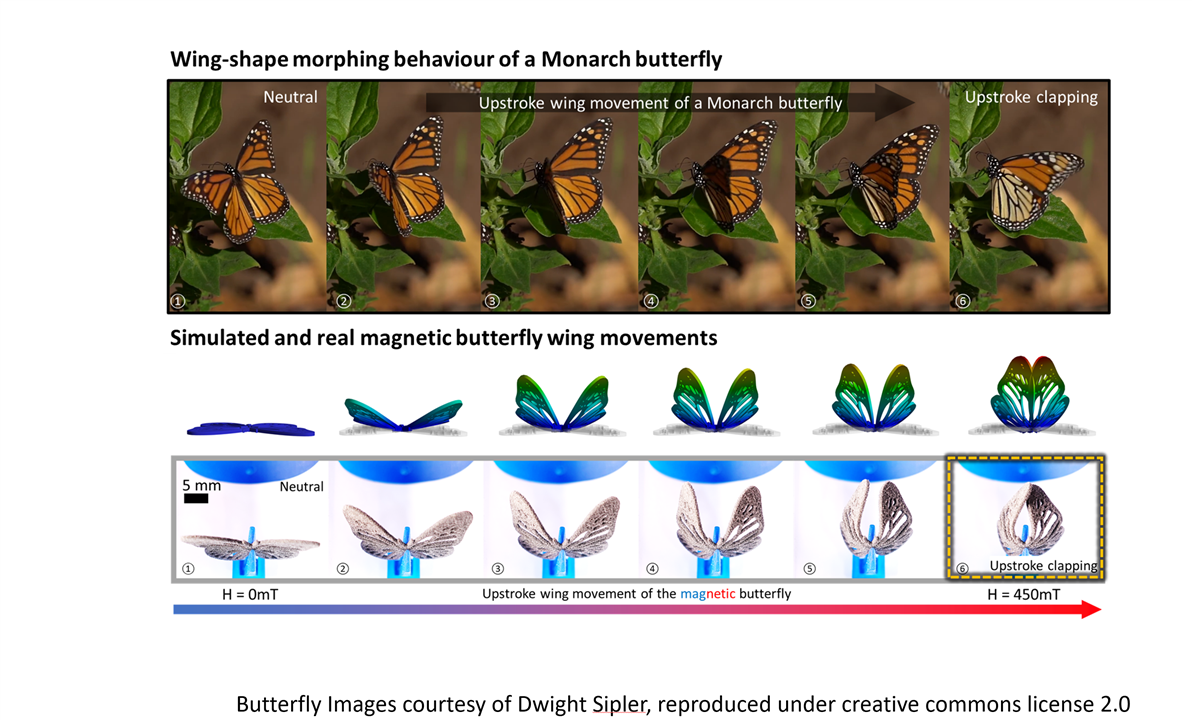
The robotic butterfly wings are actuated via magnetic fields and can perform precision movements without electronics or batteries. (Image credit: University of Darmstadt)
German researchers from the Technical University of Darmstadt and the Helmholtz Center Dresden-Rossendorf have developed a robotic butterfly with flexible wings that actuate using magnetic fields. The tiny flying robot was inspired by the efficiency and adaptability of monarch butterfly wings and doesn’t require electronics or batteries to actuate the wings or for precision movement. According to the researchers, the advancement could fundamentally change environmental monitoring, rescue operations and biomedical applications.
Monarch butterflies are known for their endurance and adaptability, and once every year, they migrate thousands of miles between Canada and Mexico. The key to this feat lies in their unique wings, which allow the insects to fly efficiently via a combination of active movement and passive bending. It’s those properties that served as inspiration for the magnetically-driven robotic wings.
The researchers designed the wings by embedding magnetic particles in flexible plastic wings. When subjected to magnetic fields, the wings bend and can imitate the real wing counterparts. While that may sound incredibly simple, it wasn’t without its challenges. The researchers went through 12 3D printed wing designs before generating success. Some were designed using vein structures that were modeled on the natural wing veins of monarch butterflies. The researcher’s goal was to use a combination of finite element analyses and experiments to find which patterns affect the maneuverability and efficiency of the wings. “The biggest challenge was to print ultra-thin, flexible structures that are also robust enough to withstand the loads,” explains Kilian Schafer, research head at the Technical University of Darmstadt.
The success of the flexible plastic wings could also be applied to other bio-inspired, shape-changing robots, including lightweight robots with precision-controlled movements that could be used in minimally invasive surgery. They also have potential in the development of artificial muscles or intelligent materials that can change their shape as required.
